Life in our Foothills November 2022 – Clifford Berryman and the Curb Reporter – A Daily Work of Art
Published 11:29 am Wednesday, November 16, 2022
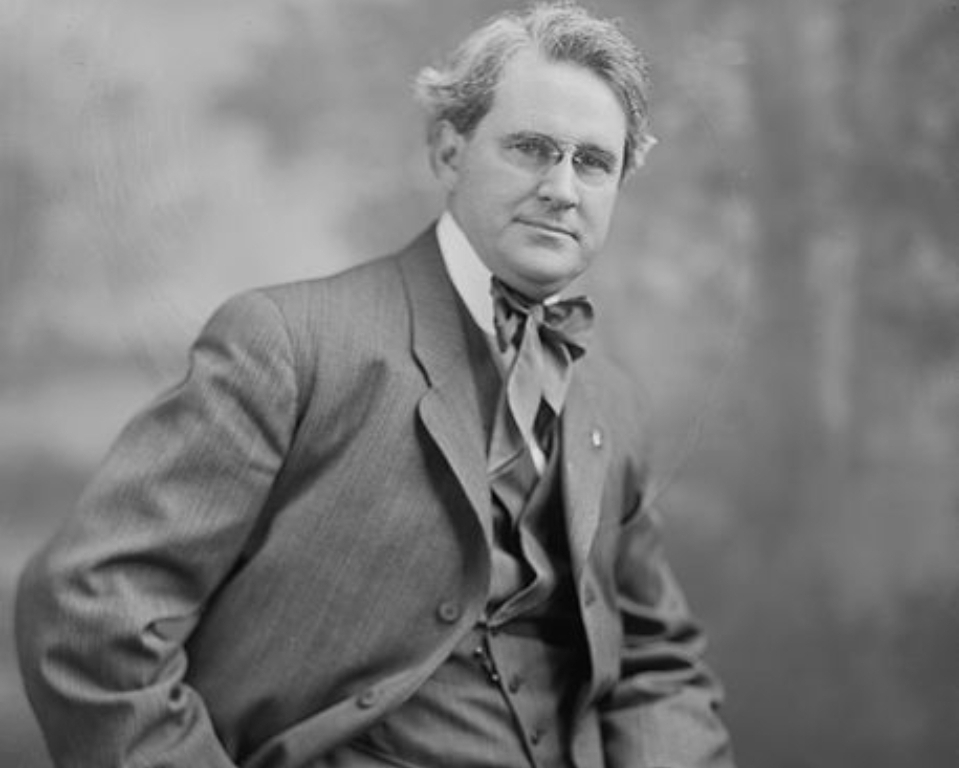
- Cartoonist Clifford Berryman (1869 - 1949)
|
Getting your Trinity Audio player ready...
|
If you’ve ever picked up the Tryon Daily Bulletin, a staple for citizens in Polk County and Landrum for nearly a century, you’ve probably noticed the black and white sketch of the Curb Reporter. This November marks the 77th anniversary of the Bulletin’s pen and ink column header created by Pulitzer Prize Winner Clifford T. Berryman. Berryman was a well-known cartoonist for the Washington Post.
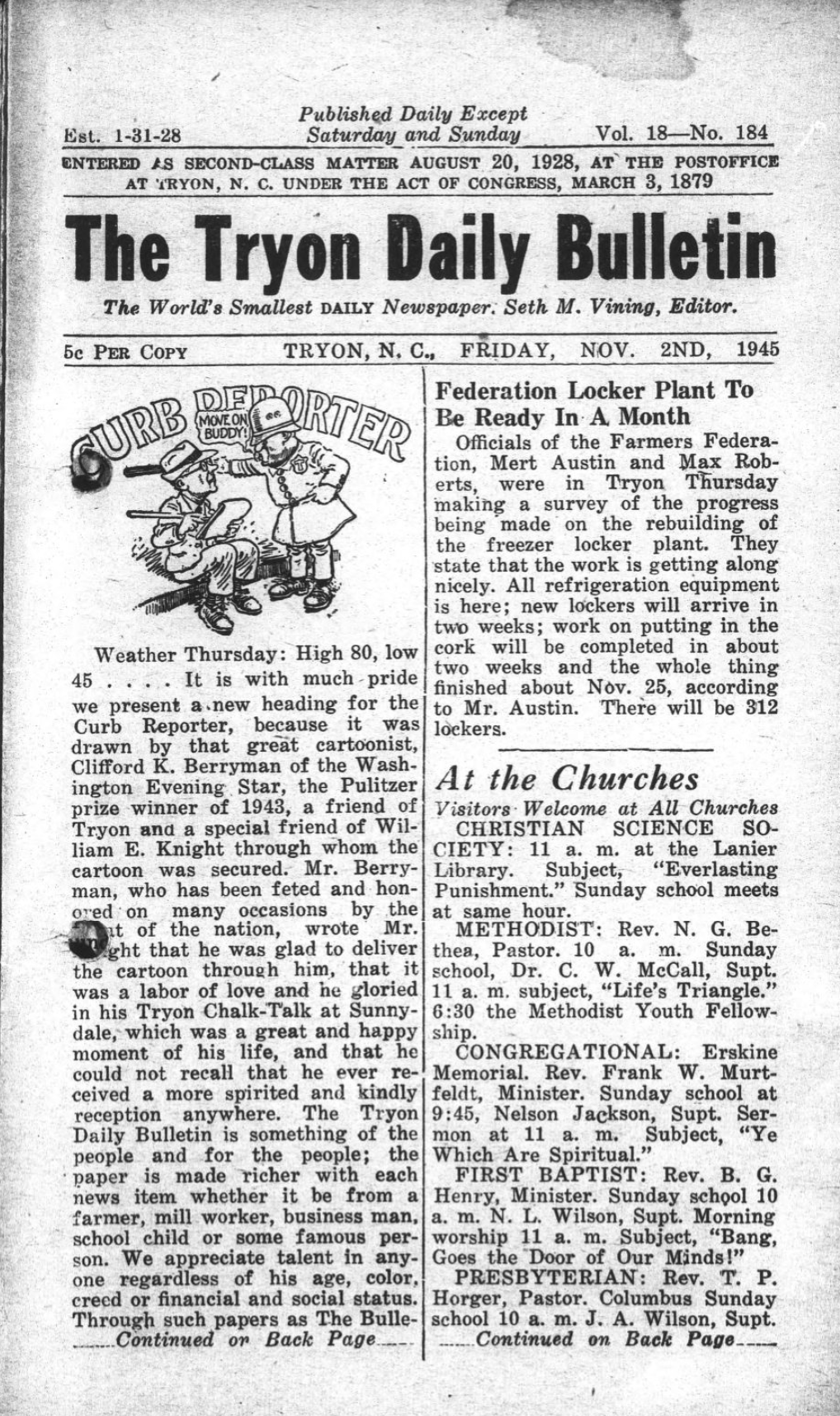
The first time Berryman’s Curb Reporter was featured in the Tryon Daily Bulletin was Nov. 2, 1945.
The Tryon Daily Bulletin was founded by Seth Vining Sr. in 1928. Originally, Vining worked at both the weekly Polk County News and the Tryon Daily Bulletin. In 1955 the Polk County News merged with the Tryon Daily Bulletin at the same time the Bulletin was enlarged to its current 8 1/2″ x 11″ size. Mr. Vining began the “Curb Reporter” as a column on topics that would interest the community as a whole. It often started with the weather, then delivered single-sentence tidbits from what celebrity was visiting the town to upcoming political addresses or dedicated to a single item of community interest, like when Clifford Berryman visited to give a talk in Sunnydale.
Clifford Berryman’s (1869-1949) interest in Tryon came from his periodic visits with his good friend William E. Knight, a New York patent attorney, who retired to the area. Both Knight and his wife Mary regularly welcomed Berryman as a house guest. Vining and Berryman would develop a friendly relationship, and it is said the Curb Reporter in the drawing looked quite a bit like Vining. William Knight secured the simple picture of a curb reporter, a small-town or inexperienced reporter, who is being harassed by a veteran-beat cop. Berryman’s version of the Bulletin’s Curb Reporter drawing first appeared on November 2, 1945, replacing the previous drawing of a small crowd.
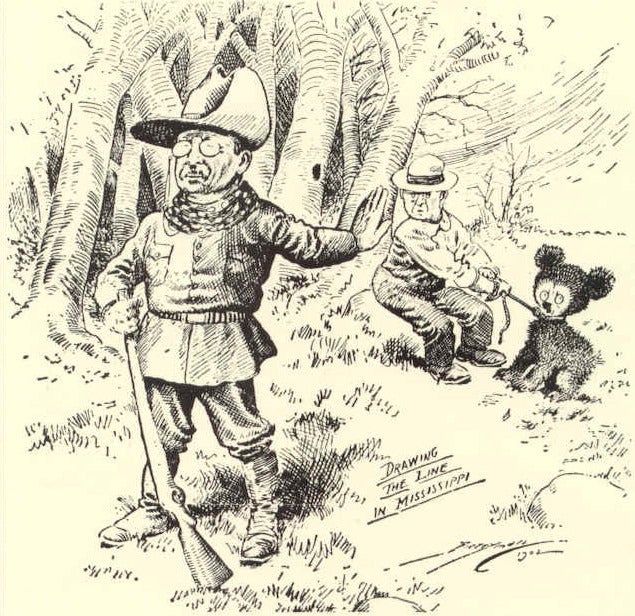
The cartoon that inspired the Teddy Bear, “Drawing the Line in the Mississippi.”
Berryman will long be remembered as one of the nation’s foremost political cartoonists and a true legend of the first half of the 20th century. His cartoon of President Theodore Roosevelt was responsible for the naming of the “Teddy Bear.” The simple cartoon titled “Drawing the Line in Mississippi” relayed the story of Roosevelt choosing not to shoot a captive bear during a bear hunt. The political cartoon would significantly impact the public and be distributed all over the country for the next six years, and inspired toymaker Morris Michtom, who had begun making toy bears to sell in his shop, to name his creation the Teddy Bear.
The appeal of the Teddy Bear was not lost on Clifford, and he would continue to use the “Berryman Bear” in his cartoons for years, often as a character or alter-ego to convey hard truths in his one-panel comics. His prolific career spanned from 1891 to 1949, first with the Washington Post and then with the Washington Star. Over the years, his cartoons would significantly impact public and popular opinion, most notably his cartoons titled “Remember the Maine,” which became a morale-boosting cry for American soldiers in the Spanish-American War, and “Votes for Women Bandwagon,” which depicted the lack of support from certain male politicians for the Women’s Suffrage Movement.
Berryman’s impact and work would eventually earn him the Pulitzer in 1943 for his cartoon “But Where is the Boat Going?,” which showed President Franklin D. Roosevelt and the government’s indecision over where to deploy the USS Mississippi at the beginning of WW2. His son James T. Berryman would eventually win a Pulitzer in political cartooning, making them the only father and son to win in the same category.
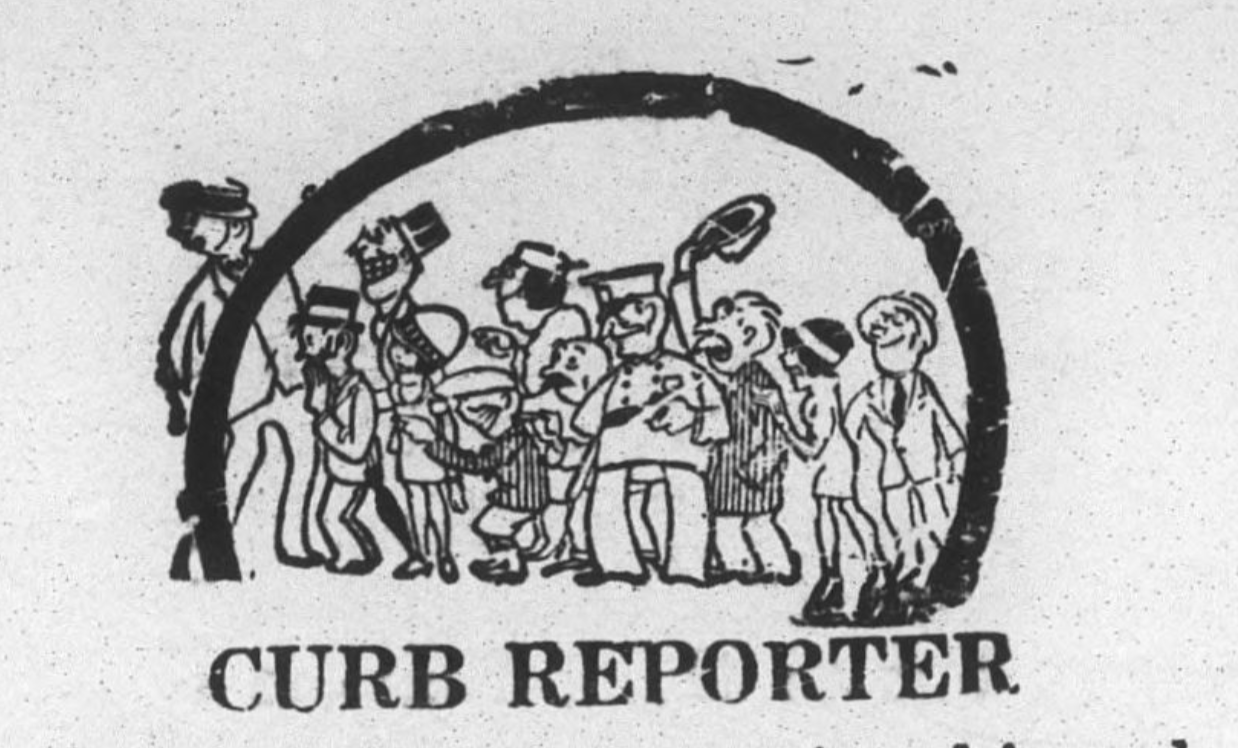
This is the original Curb Reporter cartoon that was replaced by Berryman’s in 1945.
On a visit to Tryon in 1945, Berryman expressed great affection for the town and his reception upon visiting. He extolled the virtues of small-town newspapers like the Tryon Daily Bulletin, stating “the Tryon Daily Bulletin is something of the people for the people; the paper is made richer with each news item, whether it be from the farmer, mill worker, businessman, school child, or famous person. They appreciate talent in anyone regardless of age, color, creed, or financial and social status.”
He added, ”through publications like the Bulletin, the spirit of democracy can grow and help build communities and nations throughout the world. The way we think and feel about things is important. We can attain happiness only through our state of mind. The friends of the Bulletin make happiness for themselves through the exchange of the news.”
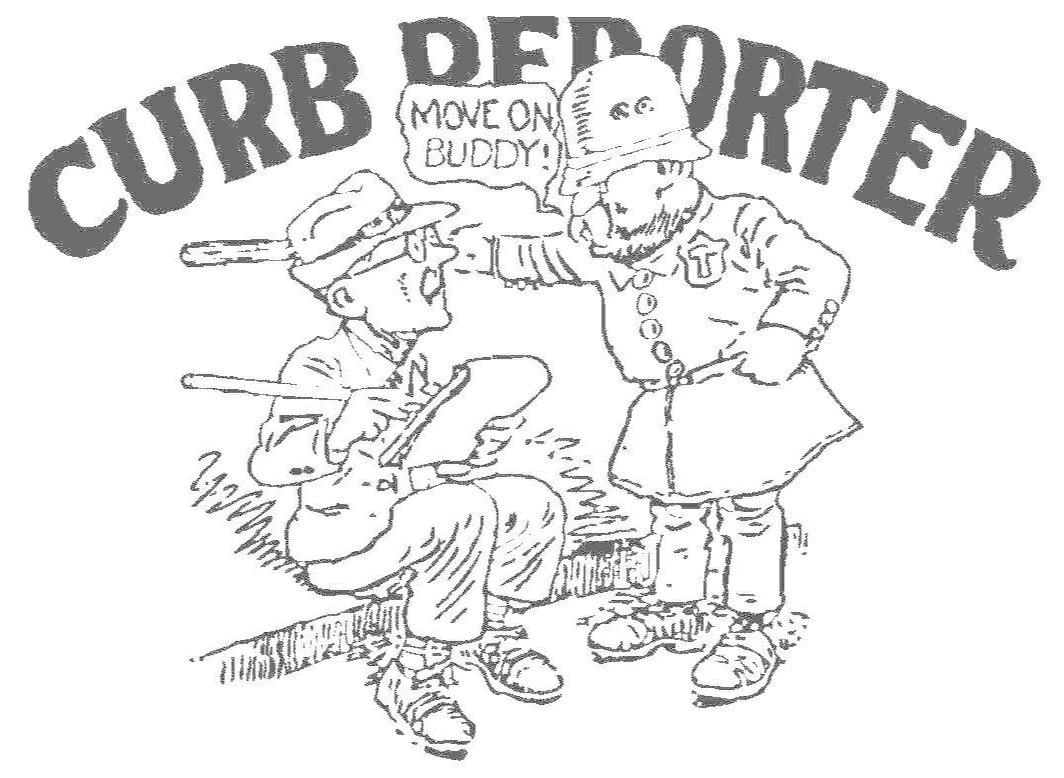
Clifford Berryman’s Curb Reporter Cartoon
The history of cartooning and satirical drawing goes back to before the written word. Still, the first political cartoon is often credited to Benjamin Franklin and his illustration of a dismembered serpent as a symbol of the State’s lack of unity and to emphasize the importance of the Albany Plan, a failed attempt to unify the colonies in 1754 to deal with the French and the Iroquois Confederacy.
The art form grew in popularity with the ascent of Thomas Nast, sometimes referred to as the father of the American cartoon. Nast’s work would be responsible for bringing the donkey and elephant into a political context, while also helping to take down political corruption with a series of drawings that were hailed by Berryman as “some of the most celebrated specimens of graphic social protest in American history.”
Political cartooning has only risen in popularity over the years. Memes, digital art, and computers have begun to replace the old-school lead pencil and India ink Berryman used at his drafting table. Still, using images to make political statements continues to be an effective technique to inform us about the world around us, just as the political cartoons of men such as Nast, Franklin, and the Berrymans will continue to educate and enlighten us on great lessons in history.
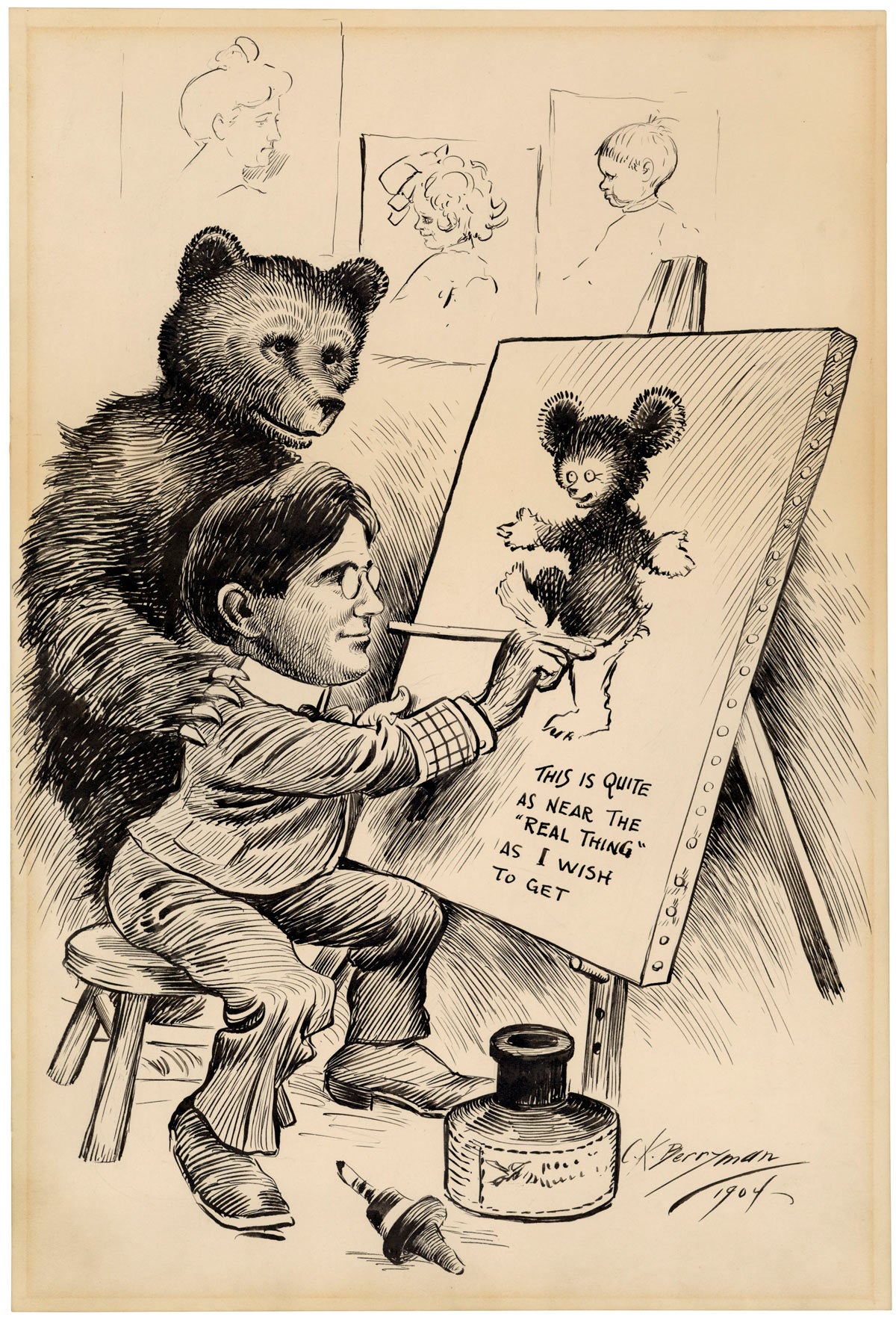
A Berryman self-portrait.





